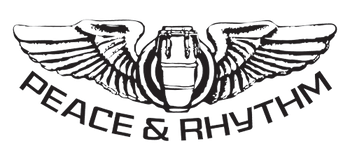
One of the leading lights of the hard bop era, trumpeter Lee Morgan broke onto the scene as a teen prodigy, playing with John Coltrane, Dizzy Gillespie, Hank Mobley and Art Blakey in the mid-to-late '50s. His driving style and clear, bold tone contributed all over the hard bop landscape, from funky to bluesy, and from more adventurous modal stuff to delicate standards. Throughout his short but steadily working career he played with Wayne Shorter, Elvin Jones, Charlie Persip, Grachan Moncur III, Andrew Hill, Benny Golson, Jackie McLean, Larry Young, Curtis Fuller, Jimmy Smith (The Sermon), Bobbi Humphrey and in partnerships with Mobley, Wynton Kelly and Clifford Jordan. Indeed, he was employed for over 150 recording sessions and hundreds of live dates before his death at 33.
A native of Philadelphia, he played vibraphone and alto sax before starting trumpet at 13. He made his debut as a leader for Blue Note with his '56 album Candy, when he was just 19. He recorded prolifically over the next few years for the label as both a leader and a sideman, while also serving in Blakey's Jazz Messengers, where he wrote several tunes in the book, brought Wayne Shorter into the band and worked as an incredible front-line duo with him until 1961. Heavy narcotics use took him off the NYC scene for awhile before his return to some unexpected commercial success with a financially-troubled (at the time) Blue Note.
After a session exploring progressive jazz on Moncur's Evolution, Morgan's own "The Sidewinder", a studio afterthought of catchy grooviness, became a massive hit in early 1964, an influential landmark in the growth of soul-jazz and helping instigate the boogaloo craze. It became the biggest selling jazz record to date and was a major factor in pulling Blue Note out of prospected bankruptcy. In those last days before the Beatles dominated sales charts, the label encouraged many artists to record Sidewinder-esque cuts on their albums, including a few more by Morgan. A few groovers were mixed into the catalogue, contrasted with the more exciting albums such as Search For The New Land, Tom Cat, Taru (not issued until 1980) and The Procrastinator (not issued until '78). His last album (Lee Morgan aka The Last Session, Blue Note-'71) was a fine piece of extended electric fusion.
In his last few years he participated in several musician-led protests of racial inequity on television programs and his music got more forward-looking. His life was cut down in violence, being blown away by his girlfriend and her gun inside Slug's Salloon during a concert, a tragic shock to the scene around him and fans of high-level jazz artistry. His name is as important and synonymous as any in the hard bop era and his bloody end in Slug's was a major, major bummer for the world of jazz.
And Morgan's solo here is a highlight:
And of course here as well:
